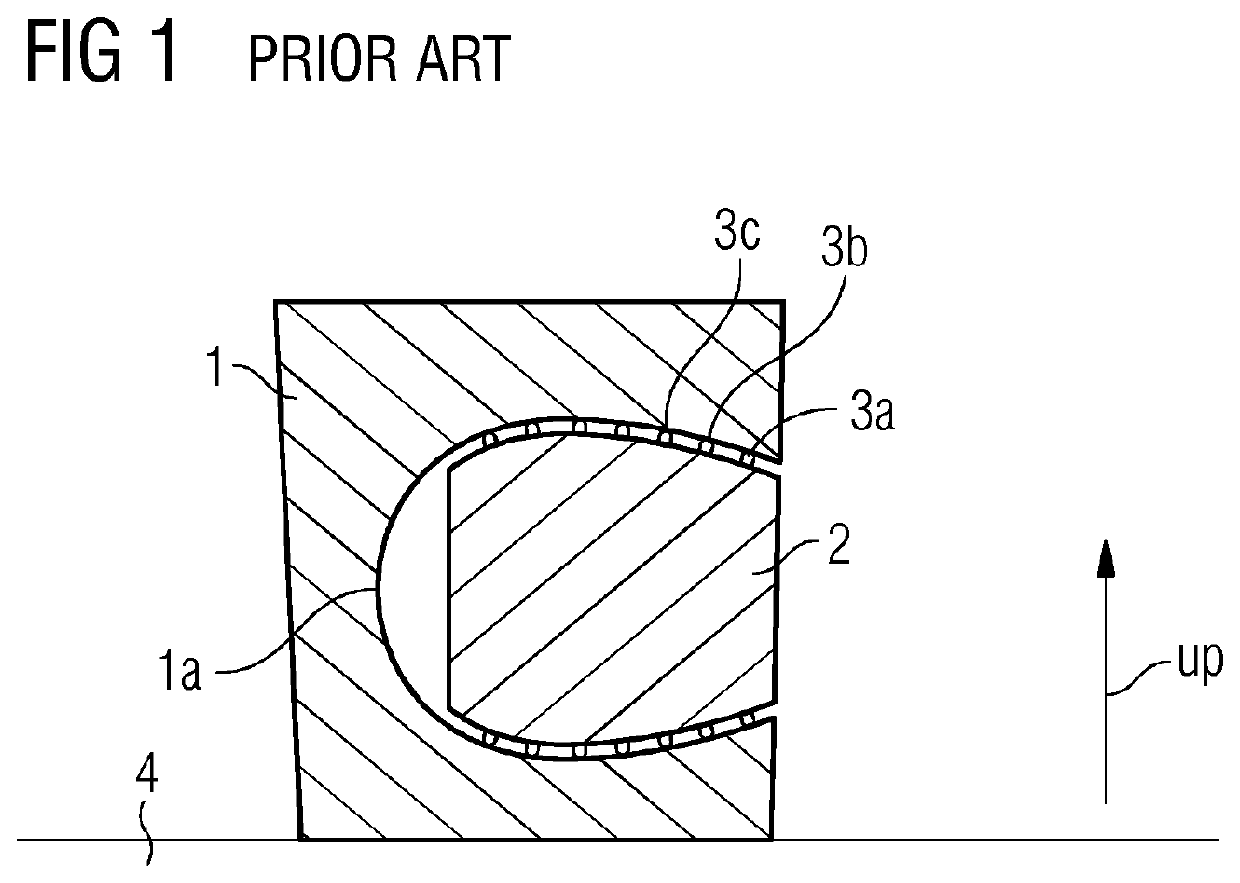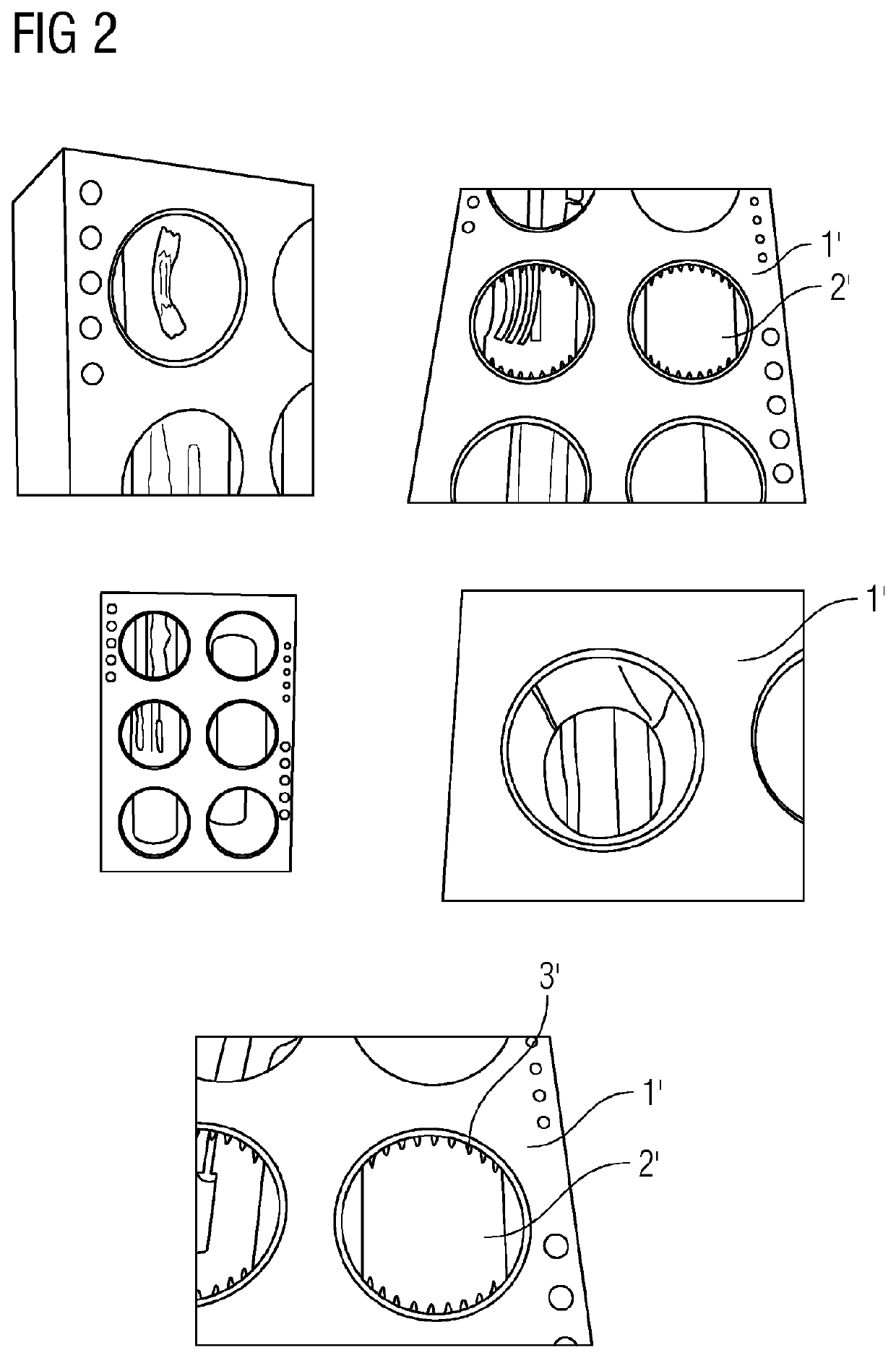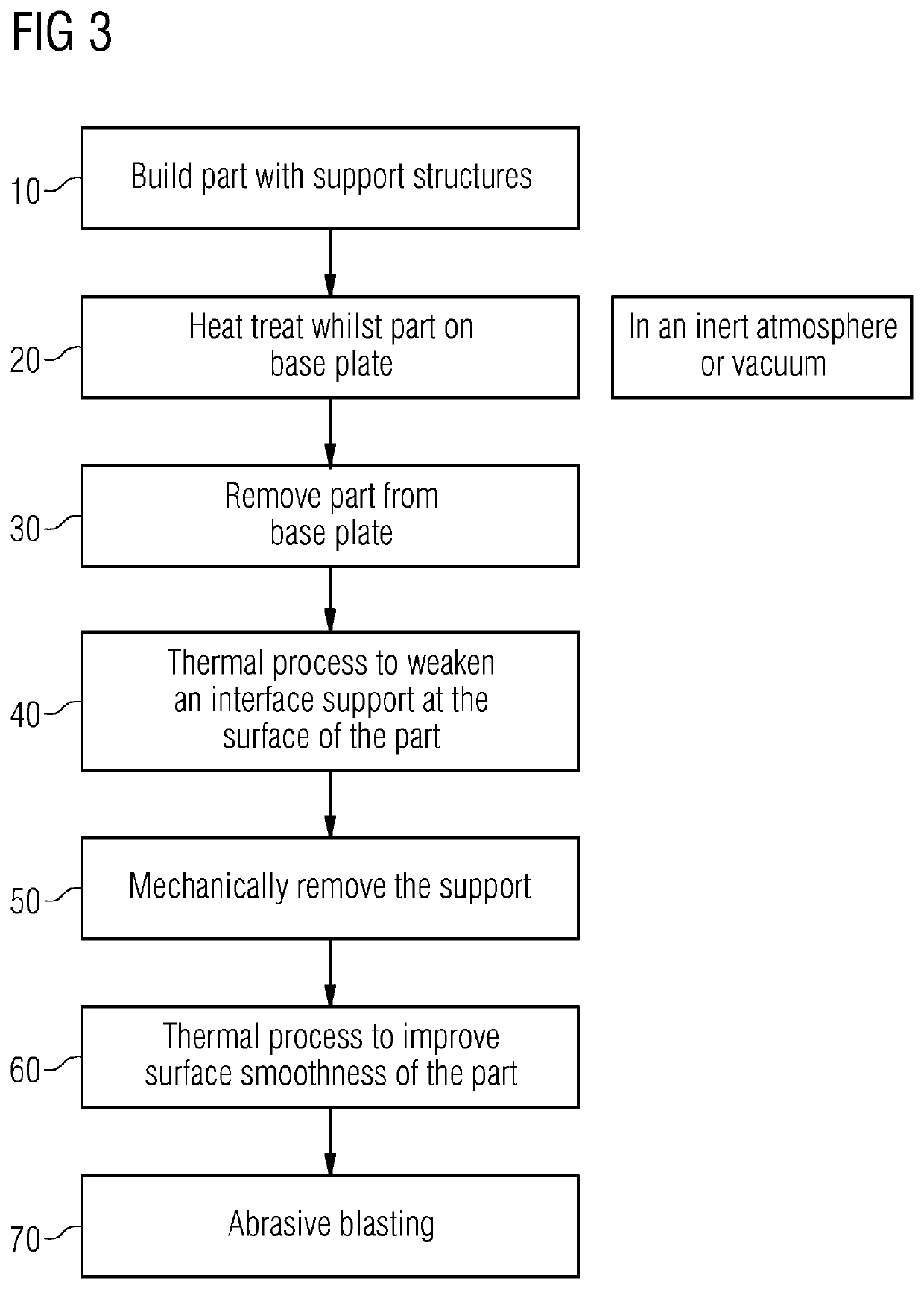Additive manufacturing
a technology of additive manufacturing and metallic components, applied in additive manufacturing, manufacturing tools, process efficiency improvement, etc., can solve the problems of affecting the quality of components, affecting the appearance of components, so as to improve the surface finish, reduce the surface roughness, and improve the effect of surface finish
- Summary
- Abstract
- Description
- Claims
- Application Information
AI Technical Summary
Benefits of technology
Problems solved by technology
Method used
Image
Examples
Embodiment Construction
[0051]A schematic representation of a metal part 1 manufactured in an additive manufacturing method is shown in FIG. 1. The metal part is for example a casing and includes a cavity 1a within its body. The part 1 is formed by being built up on a layer-by-layer manner on a baseplate 4 in a manner which will be well known to those skilled in the art.
[0052]A bulk support structure 2 is provided within the cavity 1a of the part 1. The bulk support is arranged to be built relatively quickly during the additive layer manufacture but to have sufficient strength to resist the loads from the part 1 and, for example to resists geometric distortion of the part 1. The skilled person will appreciate that the support 2 may have any convenient (optimised) form and could be a solid or for example a lattice or honeycomb structure.
[0053]To ensure that the support 2 can be removed from the component 1 after manufacture it is provided with an interface 3 which forms a distinct “break line” between the s...
PUM
| Property | Measurement | Unit |
|---|---|---|
| distance | aaaaa | aaaaa |
| centre-to-centre distance | aaaaa | aaaaa |
| thickness | aaaaa | aaaaa |
Abstract
Description
Claims
Application Information
 Login to View More
Login to View More - R&D
- Intellectual Property
- Life Sciences
- Materials
- Tech Scout
- Unparalleled Data Quality
- Higher Quality Content
- 60% Fewer Hallucinations
Browse by: Latest US Patents, China's latest patents, Technical Efficacy Thesaurus, Application Domain, Technology Topic, Popular Technical Reports.
© 2025 PatSnap. All rights reserved.Legal|Privacy policy|Modern Slavery Act Transparency Statement|Sitemap|About US| Contact US: help@patsnap.com



